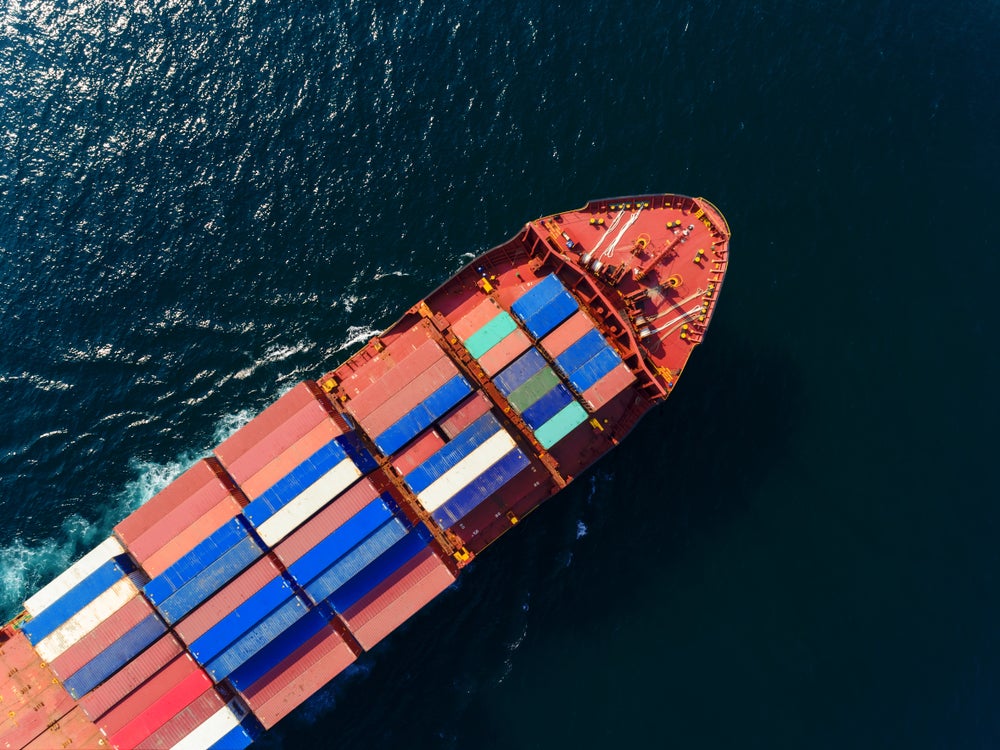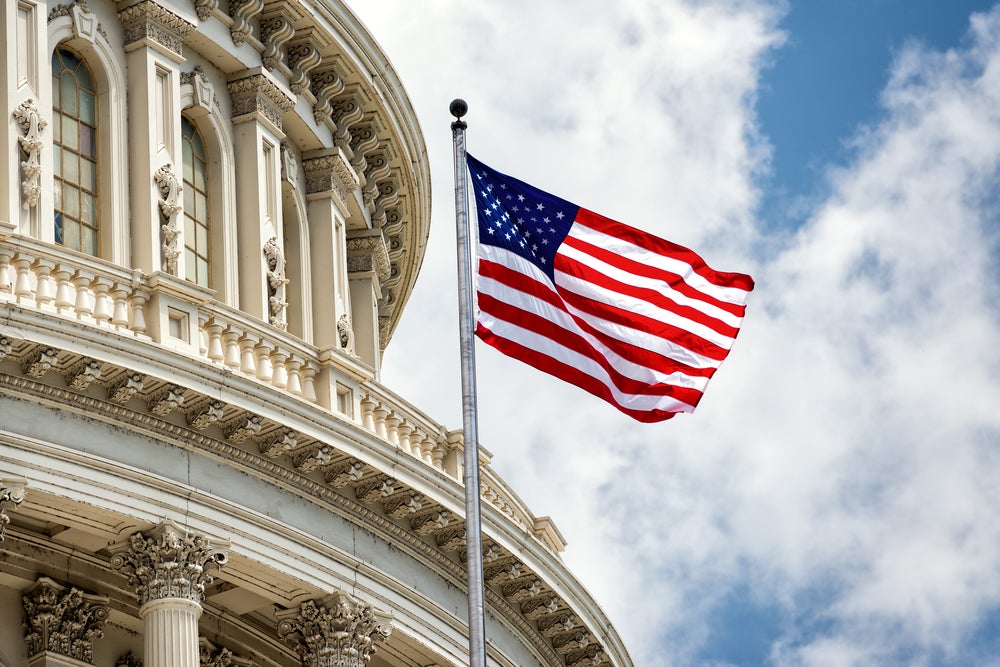
Tariff discussions are looming over the White House – and everyone in the apparel, footwear, and accessory industry should be on high alert, writes Rick Helfenbein, president and CEO of the American Apparel & Footwear Association (AAFA).
Storm clouds over the port bow! Lower the sails and switch on the engine.
Alas, some say, the sky is clearing and the storm might pass…but right now that ugly storm cloud is coming right towards us, and it’s worse than we can imagine. Are you ready to take arms against our sea of tariffs and oppose them?
The fact is that President Trump has had a consistent voice on trade throughout his entire career – starting well before his Presidential campaign. Back in 1987, Mr Trump placed a large ad in the (“failing”) New York Times that targeted Japan. He was blunt: “For decades, Japan and other nations have been taking advantage of the United States. The world is laughing at America’s politicians as we protect ships we don’t own, carrying oil we don’t need, destined for allies who won’t help.”
During his unabashed business career, Mr Trump bought products from foreign countries (like China) while simultaneously trashing them in the public forum, claiming that China took advantage of our American dream. Make no mistake, if President Trump can levy tariffs against China he will. And the products he taxes may very well be apparel, footwear, and accessories.
See Also:
“As President, Trump has the power to enforce his beliefs on our trading partners – especially China”
President Trump firmly believes that trade deficits are bad, that deficits are caused by poorly negotiated trade deals, and that tariffs should be reciprocal. It doesn’t matter that his logic may be flawed, it only matters that this is what he believes and, as President, he has the power to enforce his beliefs on our trading partners – especially China.
How well do you really know your competitors?
Access the most comprehensive Company Profiles on the market, powered by GlobalData. Save hours of research. Gain competitive edge.

Thank you!
Your download email will arrive shortly
Not ready to buy yet? Download a free sample
We are confident about the unique quality of our Company Profiles. However, we want you to make the most beneficial decision for your business, so we offer a free sample that you can download by submitting the below form
By GlobalDataSo, let’s take a closer look at the logic.
Are trade deficits bad?
Many economists (including me) say that deficits are a sign of prosperity. The great economist Adam Smith said: “Nothing can be more absurd than this whole doctrine of the balance of trade.” Just think about this: if deficits were bad then the US would have a weak economy and Russia would have a strong one!
Did China steal our jobs?
To quote then-candidate Trump: China is an economic enemy, that has “taken advantage of us like nobody in history. It’s the greatest theft in the history of the world, what they’ve done to the United States. They’ve taken our jobs.”
“Job loss was caused by a combination of automATION, innovATION, globalisATION, and over-regulaATION. You don’t fix this by adding more taxation”
There is no doubt that employment has been impacted by manufacturing migration. However this broad statement about China job theft stirs American anger, and doesn’t really explain the whole “ation” picture. Job loss was caused by a combination of automATION, innovATION, globalisATION, and over-regulaATION. You don’t fix this by adding more taxation. The solution lies in the other “ation” – educATION.
Does anyone win a trade war?
Nobody wins a trade war. The battlefield is littered with blood from prior attempts. One need only to look at the Smoot Hawley tariffs of 1930 (that enhanced the Great Depression), or the Bush 30% steel tariffs of 2002 (that died after one year), or the Obama 35% tariff on Chinese tyres in 2009 (that reportedly saved 1,200 jobs at a cost to the taxpayers of $900,000 for each job saved).
What’s wrong with the President’s approach?
While the President is trying to fight a 21st century trade battle using 20th century tools, the bigger problem is that he is focusing on tools that circumvent Congress. Section 232 is from the National Security Act of 1962 and was used to attack steel and aluminium with tariffs announced in February. Section 301 is from the Trade Act of 1974 and is focusing on Chinese trade and intellectual property transfer. The fact that he’s taking this approach despite backlash from Capitol Hill and the business community is concerning.
Is the WTO out to get us?
The strategy of this Administration has been to demean regulatory bodies that govern their actions, so that they can get what they want. This has been demonstrated time and time again with accusations hurled at the FBI and the Justice Department.
In the trade world, our governing body is called the World Trade Organization (WTO). President Trump has gone after them on numerous occasions, saying things like: “The WTO was set up for the benefit of everybody but us” and “They have taken advantage of this country like you wouldn’t believe” and “The WTO makes it impossible for us to do good business” and “We lose the lawsuits, almost all the lawsuits in the WTO.”
For the benefit of fact checkers, under the Obama administration, we filed 25 lawsuits to the WTO. We won 14, we amicably settled six and five were under litigation at the end of the administration. Someone please tell us what we lost? We need the WTO because, without them, we will have trade chaos.
Today is the beginning of tomorrow
The Trump Administration is clearly determined to fight our $375 billion trade deficit with China but they are looking at the wrong foxhole. Raising tariffs on an industry that already pays 51% of all tariffs collected by the US government will only drive sales into a downward spiral and create severe job loss. We strongly suggest that the Administration stops bashing the WTO, stops threatening new taxation, and sits down with China to try to work out the real problems instead of using a buckshot approach.
At times like this, our industry can easily look to advice from Yossarian in Joseph Heller’s Catch 22:
“They’re trying to kill me,” Yossarian told him calmly.
“No one’s trying to kill you,” Clevinger cried.
“Then why are they shooting at me?” Yossarian asked.
“They’re shooting at everyone,” Clevinger answered. “They’re trying to kill everyone.”
“And what difference does that make?”
For the health of our industry, being the wrong target certainly makes a difference to us!
Helfenbein is president and CEO of the American Apparel & Footwear Association and is a strong advocate for a robust US trade agenda and for “Made in USA.” He lectures frequently about politics and international trade and has appeared on CNN, CNBC, Fox, BBC and Bloomberg.
The AAFA and 16 other trade associations – representing soft goods and fashion industries – today urged President Trump to refrain from imposing new tariffs on US apparel, footwear, and travel goods imports from China.







